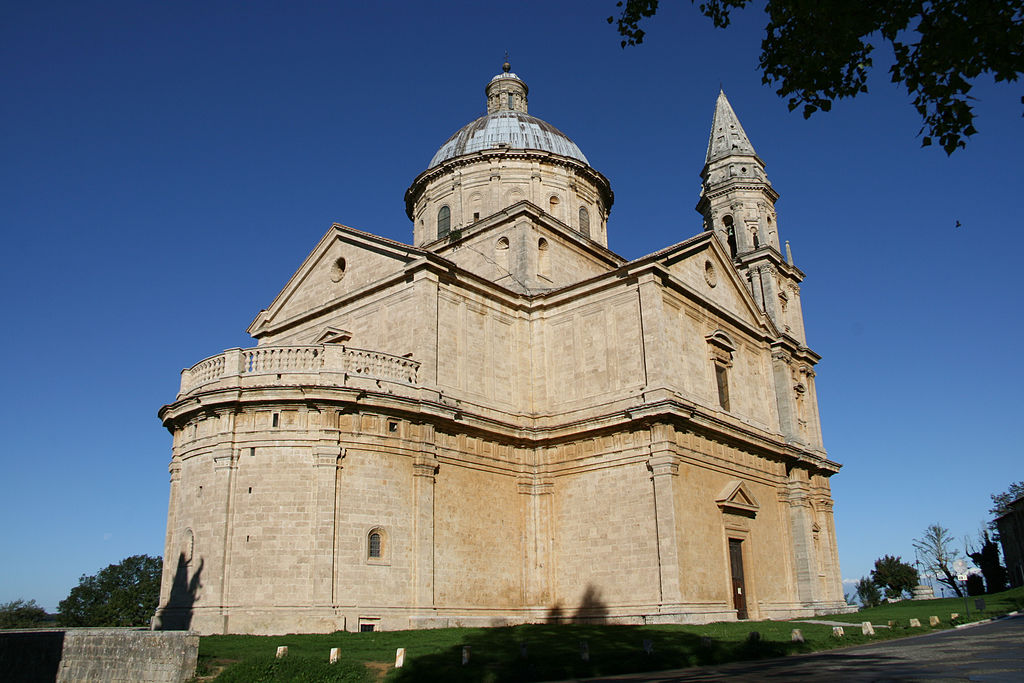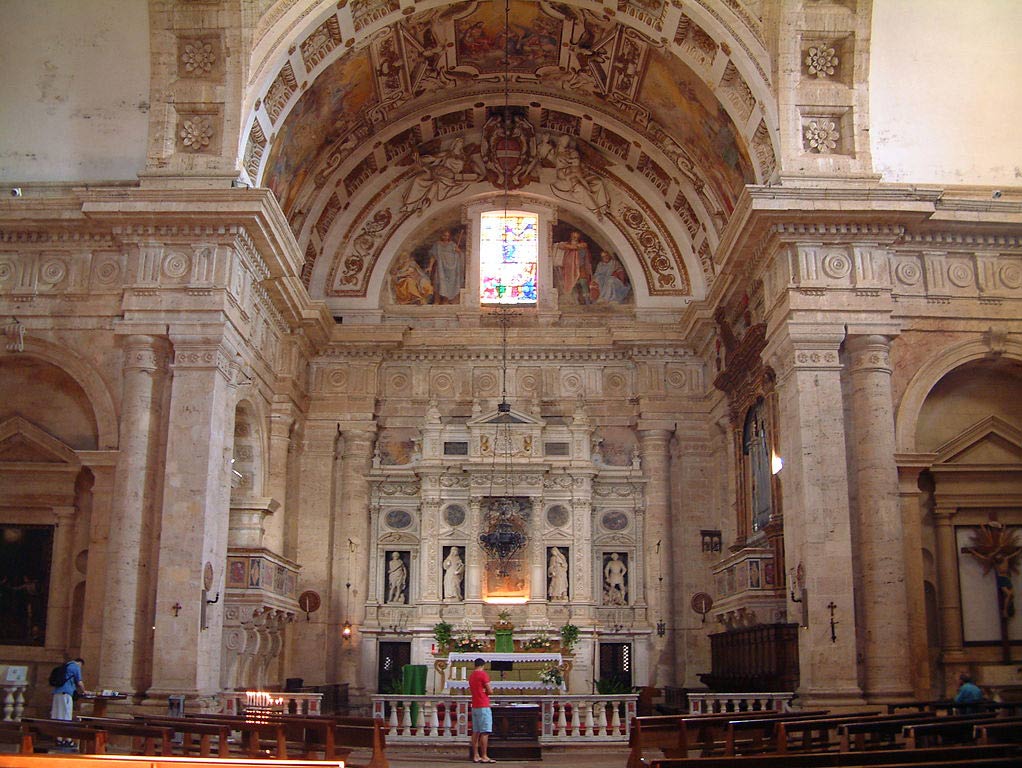Must-visit in Montepulciano: the Temple of San Biagio, built 500 years ago
26 Februar 2018
It was September 15th, 1518 when the first stone of this church was laid; the church of San Biagio, known as the Temple for its monumental and sublime example of XVI century Tuscan Renaissance architecture. Merit of Antonio da Sangallo the Elder, who designed it in the same place where stood an early Christian church dedicated to Santa Maria.
On the occasion of the 500th anniversary that occurs in 2018, we invite you to know more about the Temple of San Biagio, which has become a symbol of Montepulciano, as well as being one of the most popular attractions in Tuscany.
The legend tells that the origins of the temple derive from a miracle occurred in this place on 23rd April 1518: two women, Antilia and Camilla, and a shepherd, named Toto, passing in front of a fresco depicting the Madonna with Child and St. Francis, saw that the Virgin’s eyes moved as if she were alive; later, other miracles occurred and it was decided to erect a church as a sign of religious devotion and, at the same time, as a synthesis of the artistic language of the Renaissance, which reached its peak in the XVI century.

Credits: By Edisonblus (Own work) [CC BY-SA 3.0 (https://creativecommons.org/licenses/by-sa/3.0)], via Wikimedia Commons
The church was built by Antonio da Sangallo the Elder from 1518, in the area where there were only ruins, a surmount of bell tower and the fresco considered miraculous.
The church has a Greek cross plan with a central dome and a semicircular apse, inside which the sacristy was obtained, while on the opposite façade of the cross, which must be considered the main one, there are two bell towers, of which only the one left is completed.
The Temple is on the outside, as on the inside, entirely covered in travertine slabs showing an amber color. Depending on the light of the day, the stone acquires always different shades of color.
The interior of the church has the same architectural solemnity of the exterior, even if the altars are simple and without furniture. The only wall with numerous decorative elements is that corresponding to the Altare Maggiore.
The background is made up of a large marble dossal, by Giannozzo and Lisandro di Pietro Albertini, completed in 1584. In the niches there are statues of saints sculpted by Ottaviano Lazzarini in 1617, representing Saint John the Baptist, Saint Catherine of Siena, Saint Agnes and San Giorgio.

Credits:By Josep Renalias (Own work) [CC BY-SA 3.0 (https://creativecommons.org/licenses/by-sa/3.0)], via Wikimedia Commons
The frescoes of the lunette and the arch of the vault in the main chapel were painted in 1598 by the painter Angelo Righi. In the lunette are depicted the Four Kings of Israel, while in the great arch we see the stories of the Virgin: the Transitus, the Assumption and the Coronation.
The window was commissioned, in 1550, to Michelangelo Urbani da Cortona. It depicts an allegory of the Conception of the Virgin, surrounded by Angels and Saints, while at her feet are Adam and Eve who commit original sin.
In front of the church is the Canonica, with a double loggia, designed by Sangallo and built around 1550. The well in front of the Canonica was built between 1550 and 1551 and originally had two columns with travertine architrave.
How to get to the Temple of San Biagio
To visit the Temple, follow these info according to your preferred means of transportation. By car, if you are coming from the North, take the A1 Autostrada del Sole motorway, exit at Valdichiana-Bettolle, cross the town of Bettolle and follow the signs for Torrita di Siena. Once in Torrita di Siena, continue towards Montepulciano.
From the South, take the A1 Autostrada del Sole motorway, exit at Chiusi-Chianciano Terme, then follow the signs for Chianciano Terme. Cross the town of Chianciano Terme and continue towards Montepulciano.
By train, the nearest train station is Chiusi-Chianciano Terme (20 km away), while it is possible to arrive by bus line TIEMME (Toscana Mobilità) www.tiemmespa.it and Linea Ferroviaria Italiana (LFI) www.lfi.it.
The events related to the Church of San Biagio in 2018
Please note some of the events planned during the year to celebrate the 500th anniversary of the church, such as the official Celebration, on September 15th, of the fifth centenary, which will consist, among other things, in a series of concerts at the Renana Academy of Palazzo Ricci, in the popular festival organized by the Contrada le Coste and the Association of the Giostra del Saracino, the reading by Poliziano Evento in collaboration with Arteatro Gruppo di Montepulciano, the representation in the lawn of San Biagio of Bruscellino „Toto da San Biagio“ theatrical performance, in collaboration with the Compagnia Popolare del Bruscello and much more is being defined.
Don’t miss the experiment of the Pendulum of Foucault, which will be held inside the church at two times of the year, from 18th to 24th March and then from 20th to 27th October, in collaboration with local high schools.
For other events we invite you to follow the Facebook Fanpage of Borgo Tre Rose, where we will report the next news. Plan a stop in San Biagio in 2018 to admire this masterpiece in all its majesty!
Credits preview photo: Pixabay.


